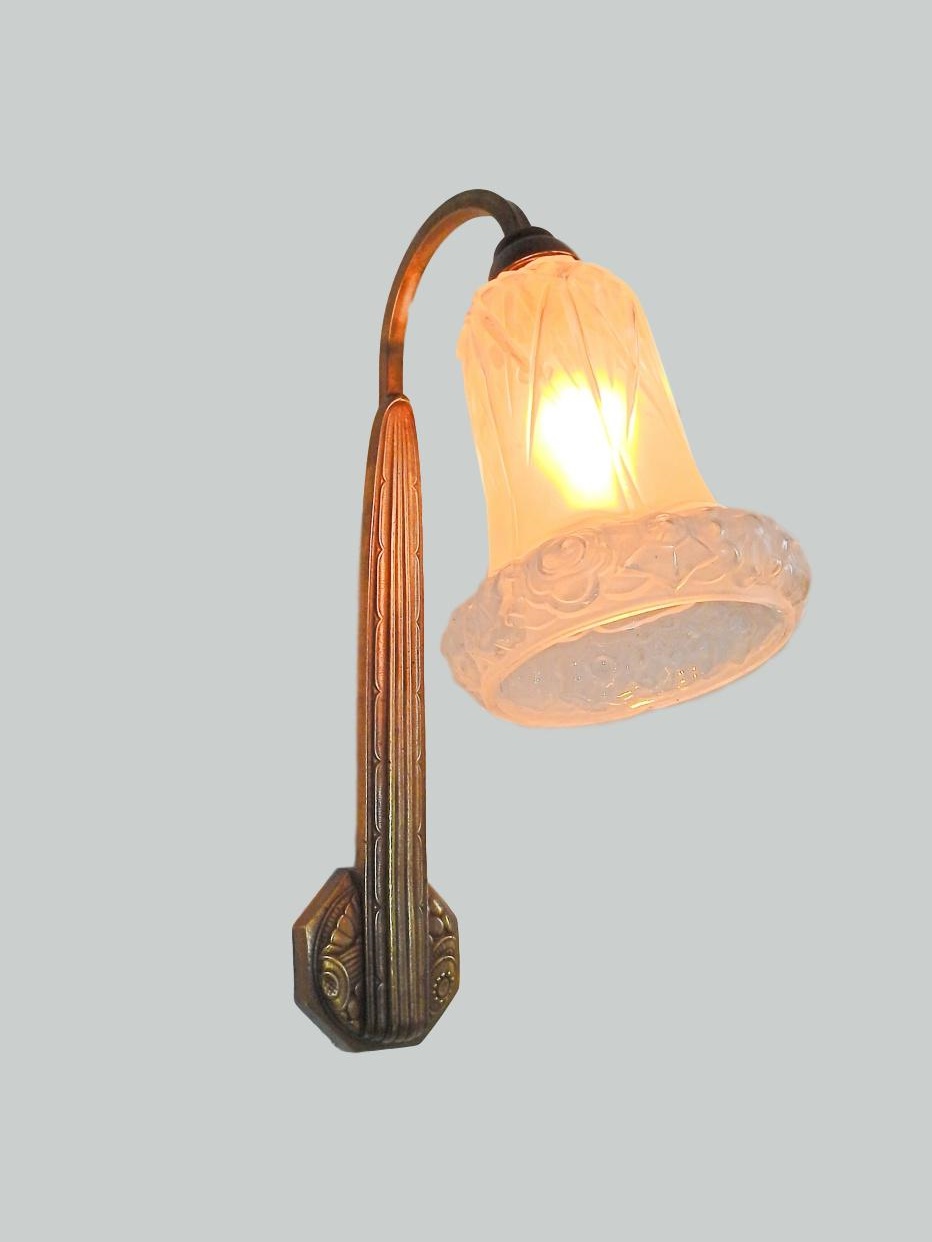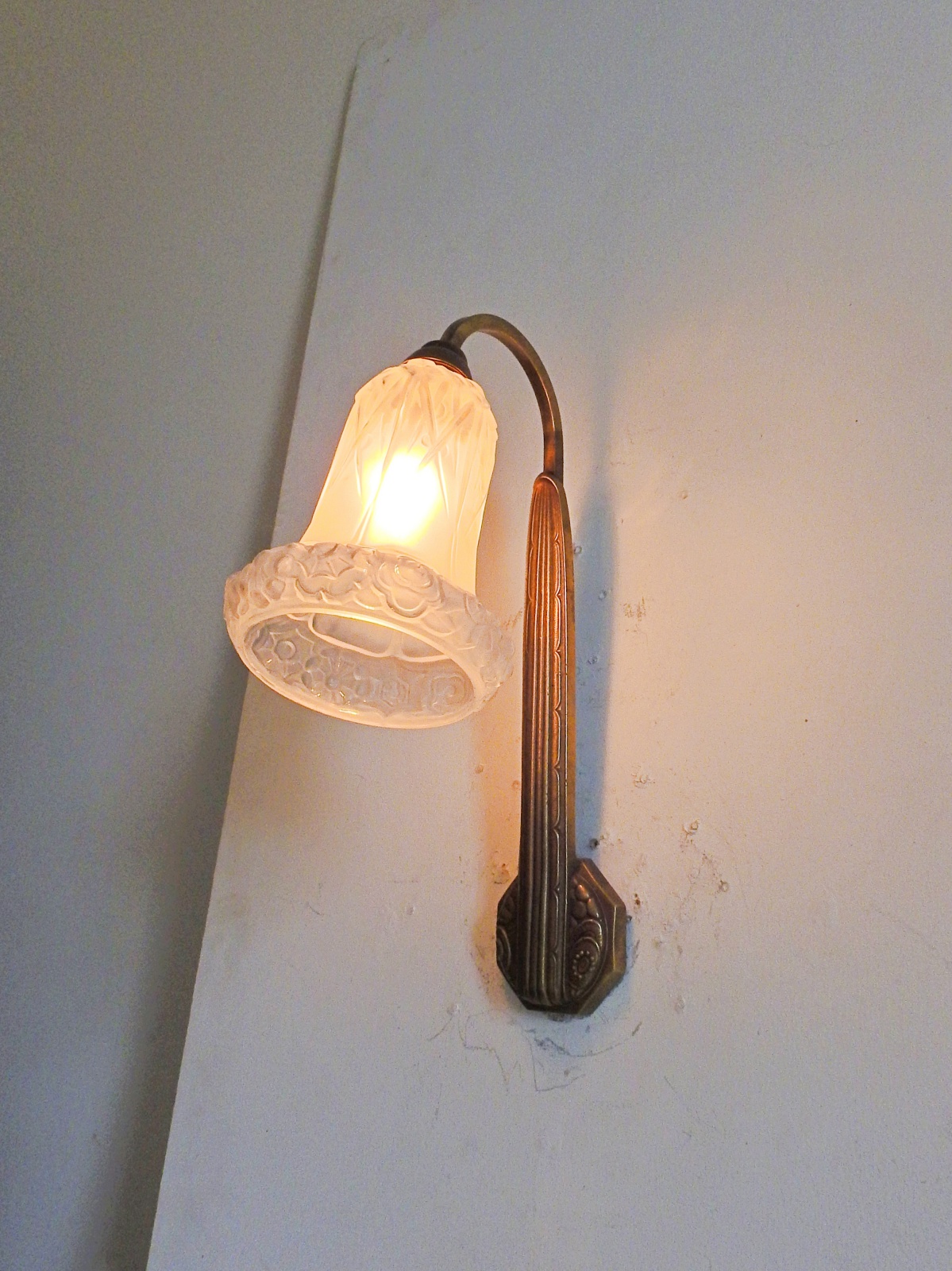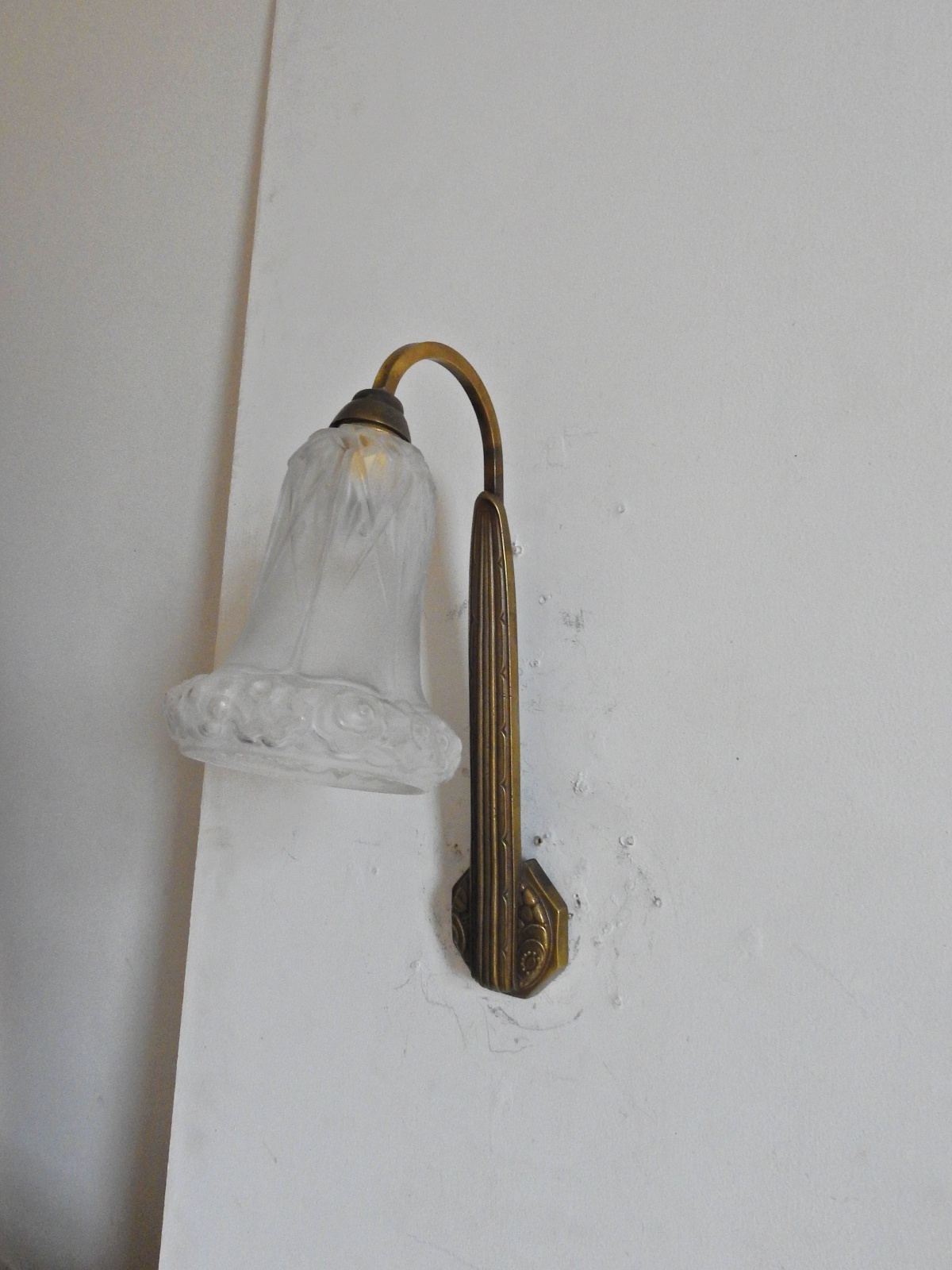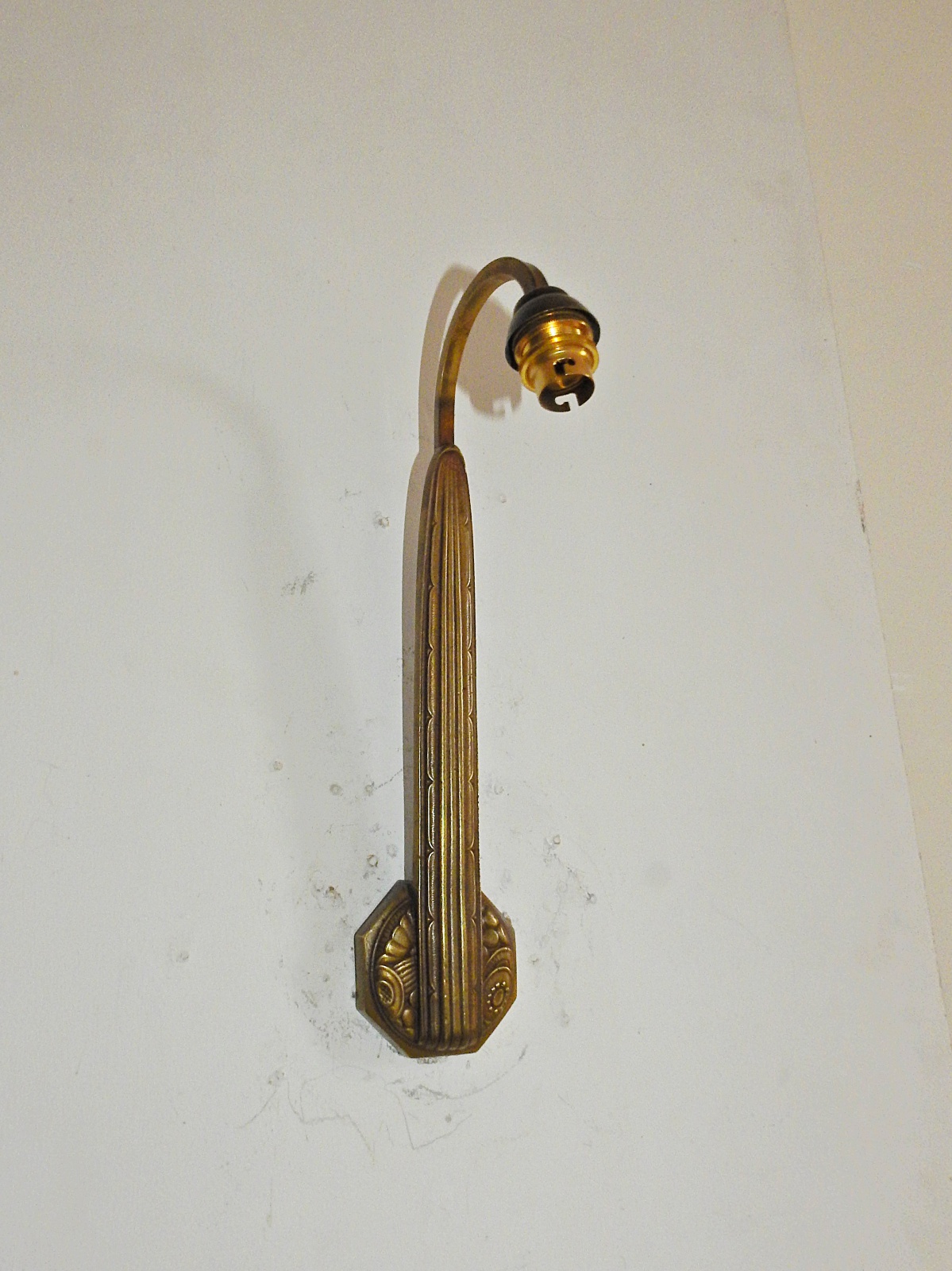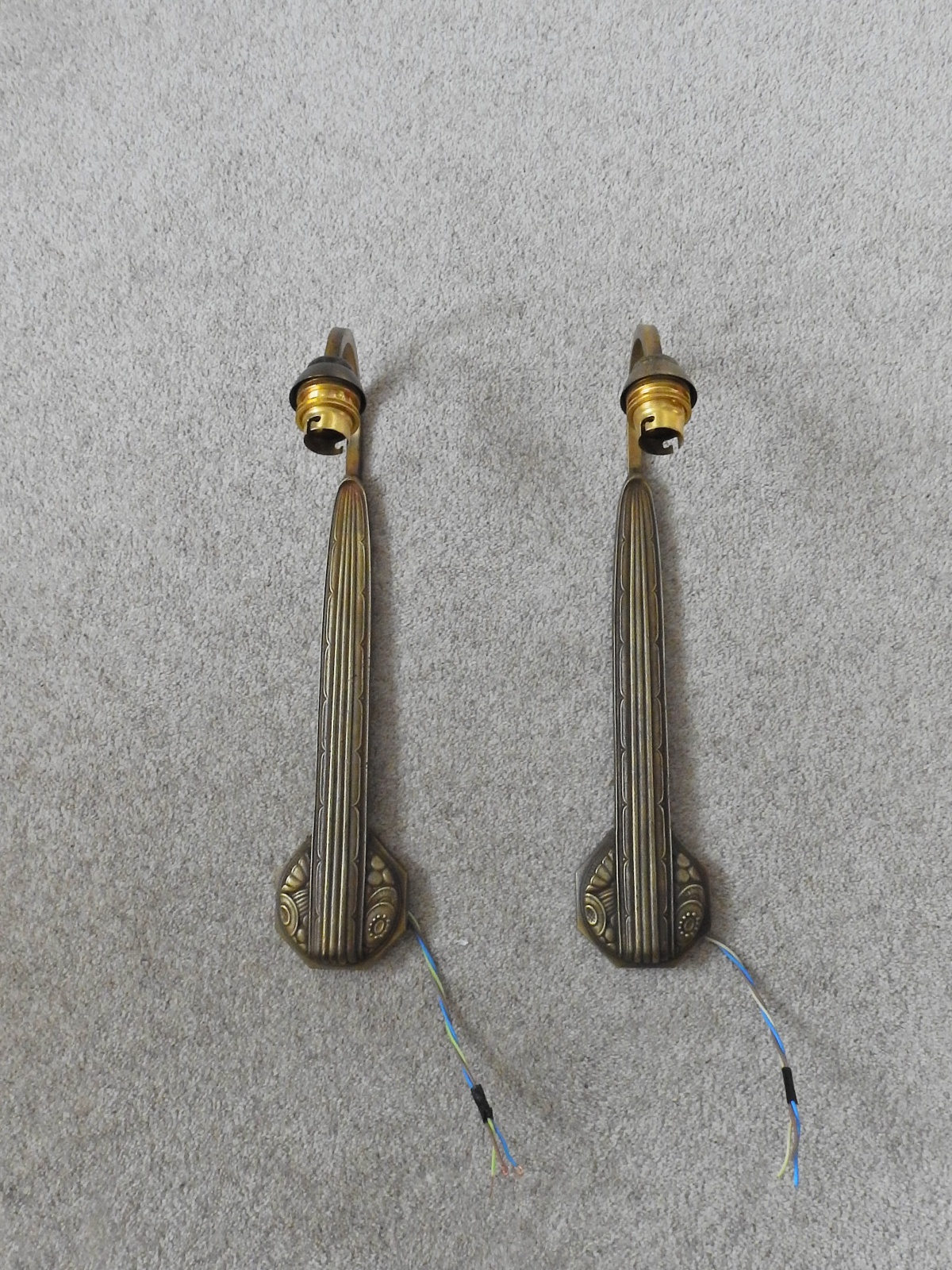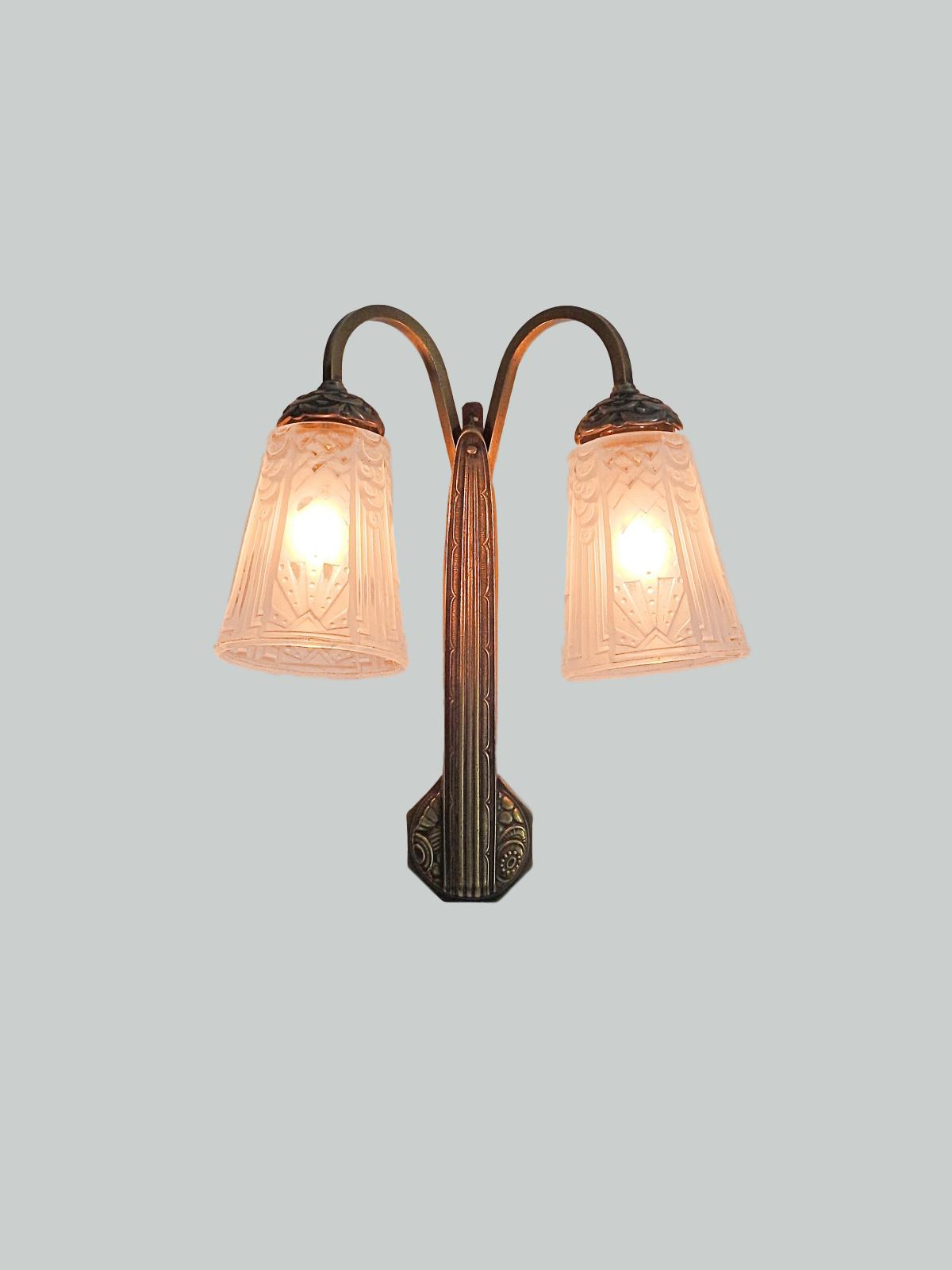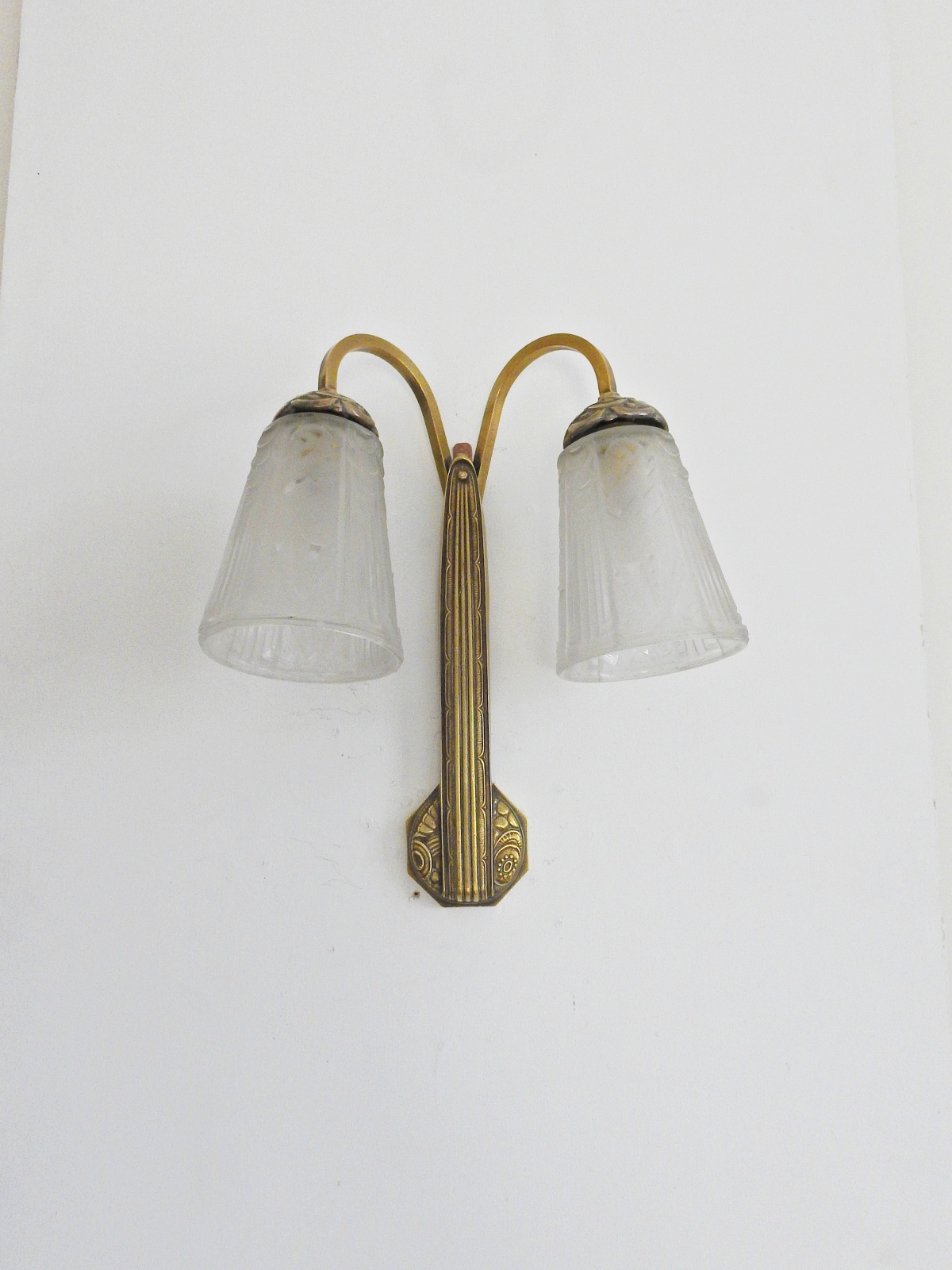Charles Ranc, Paris | 2 Single-Arm + 2 Twin-Arm Art Deco Wall Lights | SOLD
Product Code: JAL1005JAL01361: A pair of stylish Art Deco single-arm cast brass wall lights by Charles Ranc, the frosted and polished glass lampshades designed with stylised flowers and reeds by Verreries d-Art Lorrain, Croismare the secondary glass factory of Daum, Frères France c.1930
Max Ht.34cm/13.5in, Dpth.22/8.5, Ht(shade)15/6
2: A pair of stylish Art Deco twin-arm cast brass wall lights by Charles Ranc, the frosted and polished glass lampshades designed and signed Muller Frères, Luneville, France c.1930
Ht.34cm/13.5in, Dpth.15/6, W.29/11.5
Charles Ranc, Paris 1909
- After the first world-war the Paris based company (rue Amelot street, Bastille) became known for producing lighting in the neo-classical style.
- Charles Ranc lights were often designed in gilded bronze fixtures holding pate-de-verre Charles Schneider lampshades.
- In the 1930’s Art Deco period their lights were modernised in nickel plated bronze or coppered brass mounts using opalescent shades often (but not exclusively) produced by the Jean Gauthier, Ezanville glass factory (EZAN).
Verreries D’Art Lorrain, Croismare 1927
Verrerie De Belle-étoile, Daum & Co.
-
Daum Frères employ Pierre D’Avesn to design and supervise production of Art Deco Glassware at the “Croismare” Glassworks which Daum took over in 1927
-
The purpose of buying this factory was to compete with René Lalique and others for the lucrative market of Department Stores and large-scale retailers, particularly in the USA.
-
Art glass produced by Daum’s “Verreries D’Art Lorrain, Verrerie De Belle-étoile” was signed either “P.d’Avesn” or “Lorrain” or “Val”.
Verrerie d’Art Muller Frères, Luneville 1919
- Henri & Désiré learn their trade working as student of Gallé and around 1895 create their own workshop in Luneville.
- In 1896, the entire Muller family (father, mother and children) live in Nancy. Camille works at Daum’s, Baccarat and then finally he goes to Sèvres. Eugene, Victor and Pierre join the Galle’s workshop.
- In 1900, Henri leases space inside the Croismare glass-works and transfers there some of the workshops of the Rue Sainte-Anne in Luneville
- In 1919 Henri and Désiré buy the majority of shares of the Hinzelin’s glassworks and create “Les Grandes Verrerie et Cristalleries de Croismare”.
- At the same time they create the new company “Verrerie d’Art Muller Frères” to give a name to their activity in Luneville.
- Glass produced at Luneville are signed “Muller Fres,Luneville” while glass at “Croismare” is signed as such.


